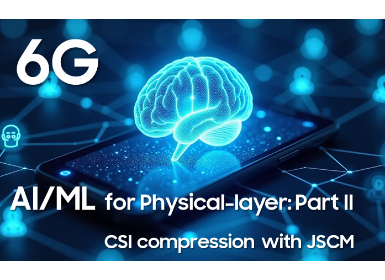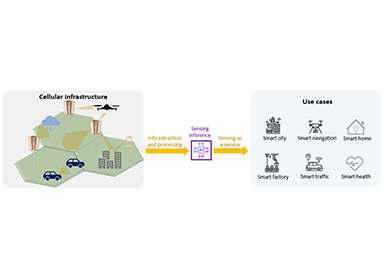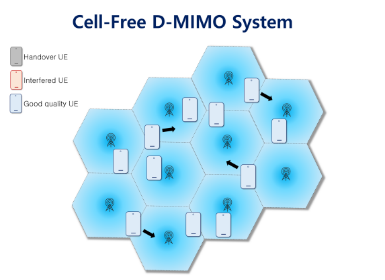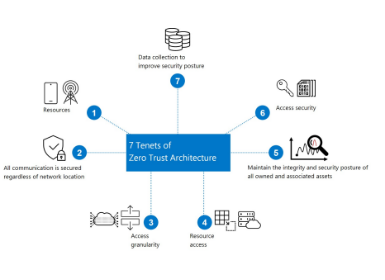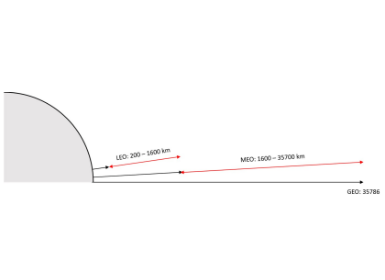Communications
Waveform Enhancements for Energy Efficiency in 6G
1. Introduction
It is crucial for 6G networks to ensure reliable connectivity with energy efficient communication for a wide range of mobile users. Waveform technology plays a vital role in enhancing the energy efficiency of mobile phones and networks, providing reduced power consumption across various scenarios. In both 4G and 5G communications, the primary waveform is Cyclic Prefix Orthogonal Frequency Division Multiplexing (CP-OFDM). CP-OFDM offers several advantages including high-speed data transmission in diverse environments, the ability to serve a large number of users simultaneously, and efficient implementation using Discrete Fourier Transform (DFT) and Inverse DFT (IDFT). Despite its numerous benefits, CP-OFDM faces a significant challenge in terms of high Peak-to-Average Power Ratio (PAPR) of the transmitted signal.
A high PAPR signal significantly affects the efficiency of Power Amplifiers (PAs). Figure 1 illustrates the relationship between the input signal power and output signal power of a PA, and the blue and red traces correspond to high and low PAPR signals, respectively. It is essential to ensure that the input signal power operates within the linear region to avoid saturation of the output signal. When the input signal exhibits a high PAPR, a power back-off is necessary to prevent entering the saturation region and ensure the PA operates linearly. This involves reducing the signal level to accommodate peak powers, as shown in Figure 1, for a given PA supply voltage. In contrast, signals with lower PAPR enable the PA to handle most of the signal components with reduced power back-off. This implies that a lower PAPR signal can achieve greater output power for a given PA supply voltage, resulting in enhanced power efficiency.

Figure 1. Impact of PAPR on power amplifier operation
Our Galaxy mobile phones and network products are designed to achieve high power efficiency in the face of PAPR challenges presented by 4G/5G waveforms. Moreover, enhancing the waveform design to achieve low PAPR is vital for enhancing the energy efficiency of mobile phones and networks. In this article, we introduce our recent developments in low PAPR waveform technologies for 6G networks.
2. Low PAPR waveform for energy efficiency enhancement

Figure 2. Time domain shape of a sequence of sinc pulses of 4G/5G DFT-s-OFDM and the combined signal
To address this issue, we can enhance the pulse shape to concentrate more signal energy within the main lobe of each pulse while reducing it in the side lobes. By doing so, we can reduce the interaction between consecutive symbols, resulting in a lower peak signal level. This can be realized by a process called Frequency Domain Spectrum Shaping (FDSS) [2]. As depicted in Figure 3, FDSS operations may adopt Spectrum Extension (SE), which utilizes additional bandwidth to concentrate the signal energy within the main lobe of each pulse by leveraging the inverse relationship between expansion in the frequency domain and compression in the time domain.

Figure 3. Transmitter diagram of DFT-s-OFDM with FDSS-SE
Although increasing SE enables further reduction in PAPR, it comes at the cost of reduced spectral efficiency due to the use of a larger bandwidth for a given data rate, presenting a trade-off between PAPR and spectral efficiency. Therefore, the central aspect of FDSS-SE involves designing a pulse shape that achieves a target PAPR with a limited SE. To accomplish this, we recently developed two distinct methods. The first approach relies on an analytical technique to develop suitable pulse shapes, whereas the second approach leverages Artificial Intelligence and Machine Learning (AI/ML) methods to design pulse shapes to optimally balance PAPR against other performance metrics.
2.1 Near-zero dB low PAPR waveform with Half-Sine Pulse (HSP)
To achieve a near-zero dB PAPR, we developed waveforms that can generate approximately constant amplitude signals in the time domain. We employed the FDSS-SE framework depicted in Figure 3 and the half-sine pulses (HSPs) [3] as the foundation for generating pulse shapes to address the PAPR and SE trade-off. In Figure 4, the time domain shape of an example HSP for an SE of 150% is shown. This HSP has the energy much more concentrated within the main lobe than the sinc pulse illustrated in Figure 2, with a 150% larger bandwidth.

Figure 4. Time domain shape of an example half-sine pulse for an SE of 150%
Figure 5 shows time domain signal waveforms of DFT-s-OFDM without (left side) and with (right side) HSP-based FDSS-SE for an SE of 150%. On the left side of Figure 5, each of data symbols with π/2-BPSK is multiplied by a sinc pulse, and then the overall signal waveform (black solid line) shows significant amplitude fluctuations in the time domain. In contrast, on the right side of Figure 5, each data symbol with π/2-BPSK is multiplied by an HSP, and the overall signal waveform shows nearly constant amplitude, resulting in a near-zero dB PAPR.

Figure 5. Time domain signal waveforms of DFT-s-OFDM w/o and w/ HSP-based FDSS-SE
We devised a method to achieve distinct amounts of SEs to restrict the bandwidth of the HSPs while satisfying the PAPR and SE trade-offs. Constraining the pulse bandwidth affects the time domain shape of the HSPs, resulting in longer side lobes. Although these side lobes can typically cause Inter-Symbol Interference (ISI), our design ensures zero ISI and an uncompromised error performance. With increasing the amount of SE, the time domain pulse progressively approximates the ideal HSP shape, resulting in a reduced PAPR.
Based on the hardware emulation results, the Universal Software Radio Peripheral (USRP) output signal waveforms are shown for DFT-s-OFDM without (top) and with (bottom) HSP-based FDSS-SE in Figure 6. The HSP-based FDSS-SE achieves significantly lower variations in the time domain signal waveform, leading to a near-zero dB PAPR.

Figure 6. USRP hardware emulation results of DFT-s-OFDM waveforms w/o and w/ HSP-based FDSS-SE
The PAPR improvements due to the HSP-based FDSS-SE for different SEs are illustrated in Figure 7. As observed in Figure 7, the HSP can greatly reduce the PAPR of DFT-s-OFDM with π/2-BPSK modulation. While the PAPR for the case without FDSS-SE is 5.6 dB, the developed HSP waveforms demonstrate the ability to decrease the PAPR to within a range of 0.24~1.69 dB. According to our USRP-based experiments with external PA, the HSP-based FDSS-SE can improve the power efficiency by approximately 6% due to the decreased PA supply power, leading to an extended battery life for mobile phones.

Figure 7. PAPR of DFT-s-OFDM w/o and w/ HSP-based FDSS-SE for π/2-BPSK modulation
2.2 Low PAPR waveform with AI/ML-optimized pulses
AI/ML has played a crucial role in driving significant advancements in communication technologies in recent years. We leveraged AI/ML methodologies and built an AI/ML platform to design low PAPR pulse shapes [2]. Figure 8 presents the AI/ML framework in which a Neural Network (NN) is employed for FDSS-SE and the optimal FDSS-SE coefficients are learned through the AI/ML training for a given optimization function. By feeding randomly generated data symbols to the NN through DFT, the NN can extract the necessary features to design a desired pulse shape that meets Key Performance Indicators (KPIs) reflected in the optimization function such as PAPR and ISI. The optimization function calculates an error value, known as 'loss' in AI/ML terms, for the transmitted and received signals based on the specified KPIs. The error value is used to adjust the NN weights during training, and the process continues until the NN weights converge to meet the KPIs.

Figure 8. AI/ML platform to design low PAPR pulse shapes
To capture the impact of ISI, we use the Mean Squared Error (MSE), which is defined as an error between the transmitted modulation symbol and the demodulated symbol in the receiver. We incorporate these KPIs into a unified optimization function so that the AI/ML platform can capture the PAPR vs ISI trade-off and be trained to design pulse shapes that achieve the desired PAPR and ISI values. Other desired KPIs can also be incorporated into the optimization function as required [2].
In practical situations, we encounter various sizes of data symbol blocks. Training and building the NNs to optimize FDSS-SE coefficients for the respective distinct block sizes is inefficient and challenging. To address this, we have devised methods to represent a pulse shape in lower-dimensional feature space using polynomial and Fourier bases [2]. By generalizing the pulse shape to be representable across all block sizes, we ensure that the training process remains independent of the specific block size. This enables a compact representation of the pulse shape. Furthermore, for each SE, there exists a distinct optimal pulse shape that minimizes the PAPR. The AI/ML platform enables us to optimize pulse shapes specifically tailored for the respective SEs of interest.
Figure 9 demonstrates the pulse shapes generated by the AI/ML platform for different PAPR and ISI trade-offs for QPSK modulation and an SE of 25%. In addition, we present the Raised Cosine (RC) pulse for the SE 25% [1] as a reference, which is a well-known zero ISI pulse. By leveraging the AI/ML platform, we effectively strike a favorable balance between PAPR and ISI, outperforming the RC pulse. Without incurring any ISI, “AI/ML Pulse I” can reduce PAPR by 0.5 dB compared to the RC pulse, leading to a 2.78 dB decrease in PAPR when compared to the 4G/5G DFT-s-OFDM waveform. Moreover, incorporating a moderate level of ISI allows to further reduce the PAPR. “AI/ML Pulse II” reduces the PAPR by 3.02 dB compared to the 4G/5G DFT-s-OFDM, at a negligible cost of a 0.03 dB increase in the required signal energy to maintain the same demodulation performance as the 4G/5G DFT-s-OFDM.

Figure 9. Time domain shape of low PAPR pulses generated by the AI/ML platform for an SE of 25%
Figure 10 shows the PAPR improvements by the AI/ML-based pulses for QPSK modulations. These AI/ML-based pulses are designed to induce a negligible, but not zero, amount of ISI, which include “AI/ML Pulse II” depicted in Figure 9 for the case of SE 25%, to achieve a low PAPR. The AI/ML-based pulses exhibit PAPR ranging from 2.6 dB to 4.06 dB while the 4G/5G DFT-s-OFDM exhibits a PAPR of 7.08 dB. According to our USRP-based experiments, AI/ML-based pulses improve the power efficiency by approximately 3%.

Figure 10. PAPR of DFT-s-OFDM w/o and w/ AI/ML-based FDSS-SE for QPSK modulation
3. Conclusion
The advent of 6G networks presents new waveform design challenges, necessitating the development of waveform technologies tailored to specific requirements. These waveforms should not only demonstrate potential for integration into the future 6G standards but also ensure backward compatibility with the 4G/5G CP-OFDM and DFT-s-OFDM waveforms. Our recent efforts have centered around the vital task of minimizing PAPR to enhance the energy efficiency of mobile phones and networks. To address this challenge, we have developed two innovative waveform technologies based on analytical and AI/ML-based approaches. According to USRP-based hardware emulation results, they are able to increase power efficiency by 3%~6% and thus ensure long lifetime of mobile phones. In addition to the energy efficiency improvement, low PAPR waveforms can be utilized to expand the 6G coverage in case that the maximum power constraint of mobile users is relaxed.
References
[1] B. Razavi, “RF Microelectronics (2nd ed.),” Prentice Hall, 2011.
[2] F. Carpi, S. Rostami, J. Cho, S. Garg, E. Erkip, C. J. Zhang, “Learned Pulse Shaping Design for PAPR Reduction in DFT-s-OFDM,” IEEE 25th International Workshop on Signal Processing Advances in Wireless Communications (SPAWC), Sept. 2024.
[[3] J. Choi, J. H. Cho and J. S. Lehnert, "Continuous-Phase Modulation for DFT-Spread Localized OFDM," in IEEE Open Journal of the Communications Society, vol. 2, pp. 1405-1418, 2021.

